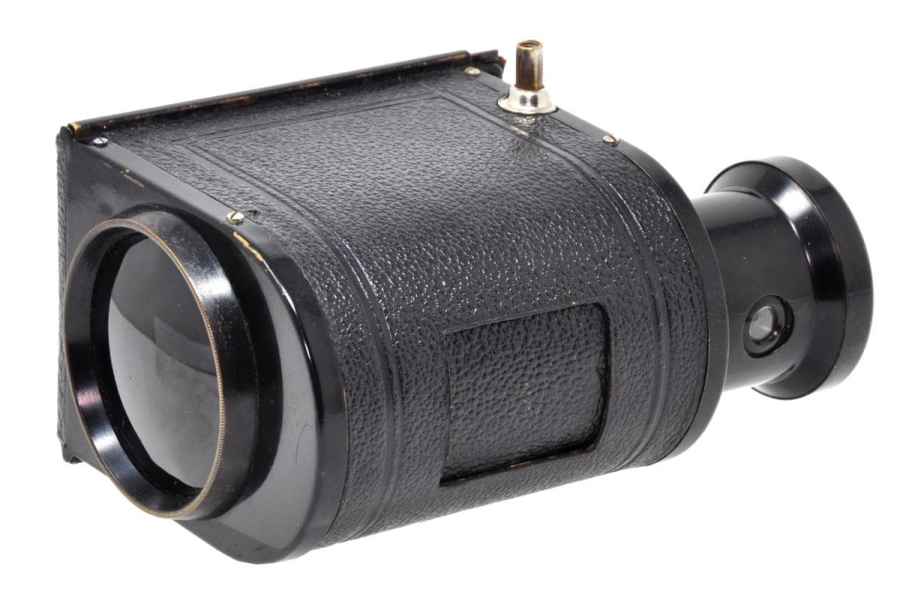Launched 1924
Price at launch £15
Guide price now £600-900
Once upon a time there was a small German camera company called Contessa. In 1919 it joined forces with another small camera company called Nettel to become Contessa-Nettel. Then, in 1926 Contessa-Nettel became one of four camera companies that merged to form Zeiss Ikon. This camera was first made by Contessa in 1912 when it was called the Argus. It continued to be made under that name by Contessa-Nettel when the two companies merged. Sometime in the 1920s, probably around 1924, Contessa-Nettel renamed it the Ergo. From 1927, under its new name, it was made by Zeiss Ikon. Got that? Okay, let’s move on.
This is a detective camera, but don’t confuse that with a spy camera. Detective cameras were made for photographers who had nothing to do with espionage, but who were fascinated with equipment that could be used unobtrusively. For that purpose, the Ergo shoots pictures at right angles to the way the photographer is facing.

What appears to be the side of the camera is actually the back, holding a focusing screen under a hood, interchangeable with a film or plate holder
It looks like a small monocular but what appears to be the lens at the front end is false, even though it is surrounded by aperture settings marked f/4.5-36. The eyepiece at the other end, which appears to be looking through the fake lens, actually uses a mirror to look sideways at the subject through a smaller hidden opening. As the shutter button is pressed, a flap in the side of the body, at right angles to the fake lens, opens to reveal the real lens. The shutter fires and the flap clicks shut. Focusing and shutter speeds are adjusted by tiny knobs on the side of the body and it shoots pictures on 4.5x6cm plates or sheet film in film packs.
The Ergo is of course somewhat impractical for use today, but it’s a wonderful piece of photographic history.

How the lens flap opens and closes as the picture is taken
What’s good
Still usable as a sheet film camera for the ambitious enthusiast.
What’s bad
Despite being made in fairly large numbers, it’s super-rare today – and therefore very expensive!







